I'm going the hortus up: I want to visit more botanical gardens and write more, so I'm combining them so one becomes a reason to do the other. In May, I visited two gardens in Rotterdam: Kralingen and Trompenburg, which formed a neat contrast between them.
Kralingen Botanical Garden
| Date | 24 May 2024 |
| Adress | Cederstraat 5, Rotterdam |
| Website | https://www.botanischetuinkralingen.nl/ |
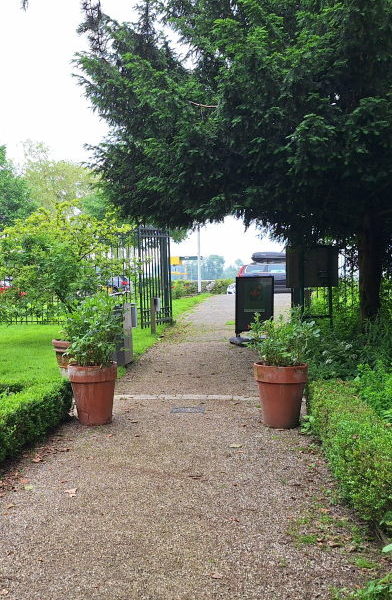
The entrance on the busy Kralingse Plaslaan
From the train station it's twenty minutes by tram and foot to get to the Kralingen Botanical Garden. Almost hidden in the old neighbourhood—it's easy to miss on Kralingse Plaslaan, and the Cederstraat main entrance lies between a high school and apartment buildings—but once inside you start wondering where all this space came from. A fun history, it turns out: in 1910, the apparently well-known local Willem Simon Burger gifted the land to the city, one one condition: that it would be used to benefit the public. It soon became a botanical garden, which was opened to the public in 1984, according to the garden's website.
Kralingse Plaslaan is a fairly busy road, full of the sounds of the city. Entering the garden from that side, a sense of relief grows as with every step the city noise diminishes, until you're surrounded by greenery and you can't tell where the garden begins or ends. The city remains close: beyond the treetops you can see apartment buildings and the nearby high school, Libanon Lyceum.
That school is very present in the garden: in their free time, students seek out the patio in the center of the garden, and some more enclosed areas between the plants are also popular. Thanks to its location and free entry, it really does feel like a garden for the people who live here. It seems to me that Mr. Burger would approve wholeheartedly.
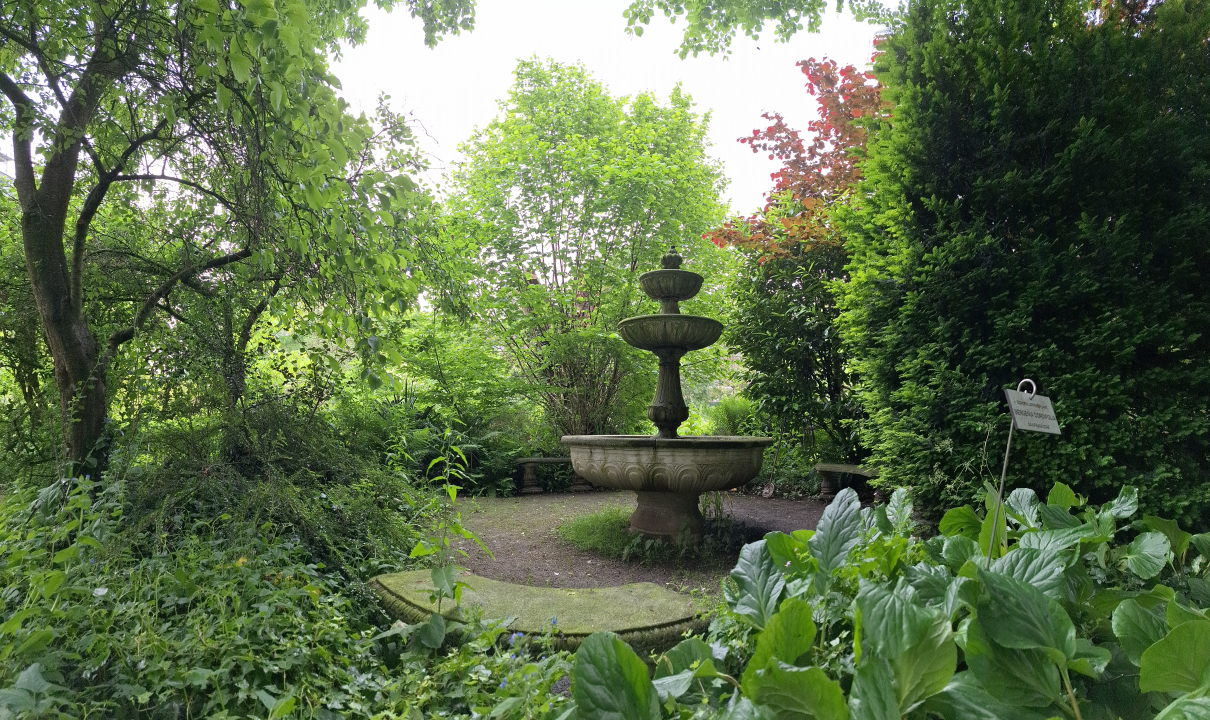
The fountain near the center of the garden. Not pictured: mosquitos.
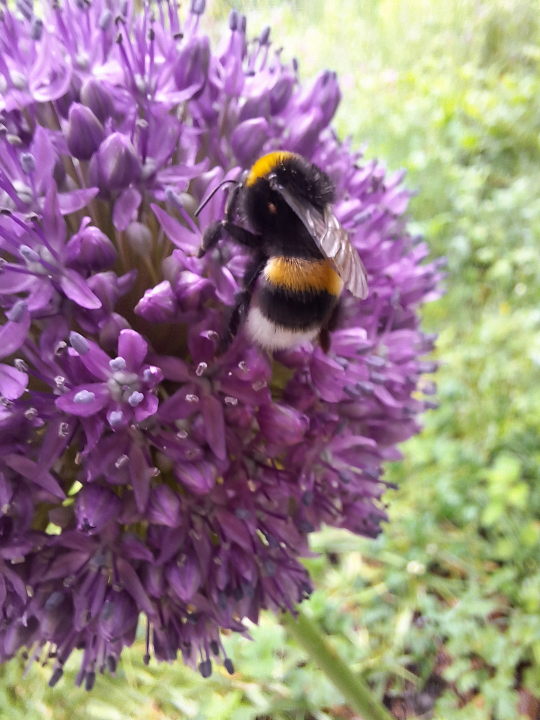
A bumblebee on an onion.
After the university gardens in Amsterdam and Utrecht, Kralingen contrasted sharply: no meticulous design with beautiful arches and eye-catching scenes, but a very functional and above all full garden where you can nevertheless find peace. Maintenance is a little less complete. There are leaves all over, and the little fountain that looks like it's practically in the open on the map is easy to miss, and the standing water seems to attract a lot of flying insects. The rose-covered pergola mainly looks promising, but maybe it's the wrong season for them. I don't want to sound negative, here: I enjoy a crowded, slightly messy garden. I recognize the art in a carefully laid out and maintained garden, but I prefer a little chaos, and enjoy a surprise around every corner. If that means a big old Gunnera blocks the path, I'll gladly take it.
A multitude of insects, birds, and toads makes an interesting garden apart from the botanical. There's a good reason there's a tour called "The garden as an ecological system" in August: it is all part of the same whole.
All in all, Kralingen may have been the perfect start for my tour-de-botanical-gardens: completely different from what I'd seen before, and a very different take on what a botanical garden can be. When I asked an employee to get a poster for BioBlitz Rotterdam that she was about to throw out, I got handed a stack of new posters and a calendar. More than ever, I wish we had a place like this in Eindhoven.
Trompenburg Gardens & Arboretum
| Datum | 24 May 2024 |
| Adres | Honingerdijk 86, Rotterdam |
| Website | https://trompenburg.nl/plan-your-visit/ |
Trompenburg is a very different place. About 15× larger than Kralingen—where I spent an hour and a half—it might be too much to see in one visit. According to the map, it consists of seven separate gardens that are separated in various ways. The Food Forest is across the street, the Excelsior Garden is connected only by a narrow strip of garden, and greenery and water are used to demarcate the others. Walking along the central path, you can turn left to walk between the tall hedges and find the Formal Garden.
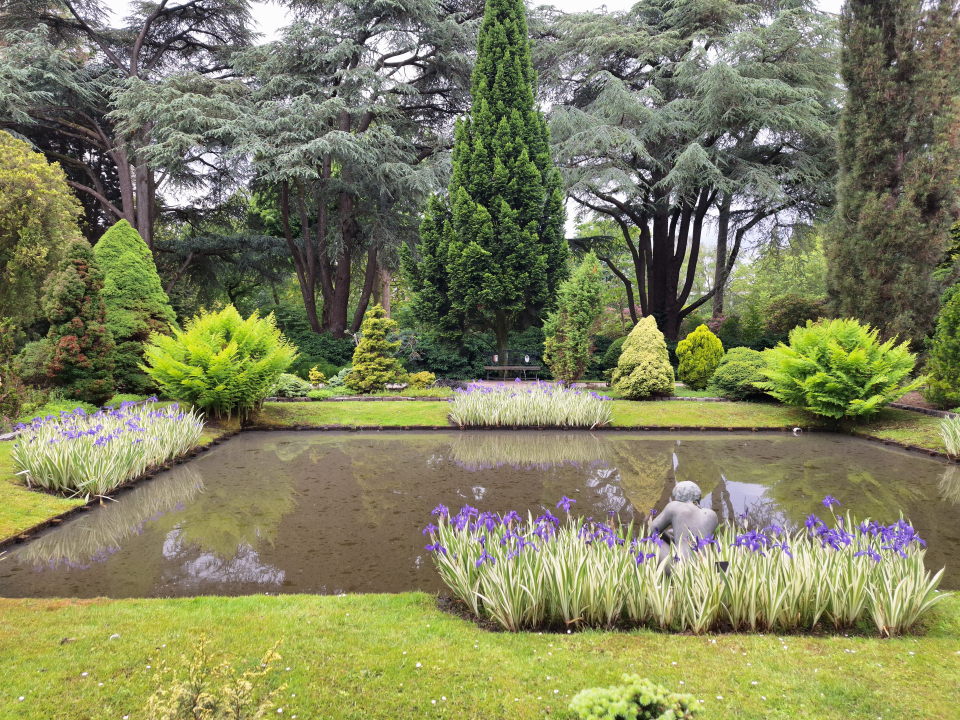
The Goldfish Pond in the Formal Garden.
The Formal Garden very clearly shows the difference in philosophy and/or means between Trompenburg and Kralingen: everything is very precisely designed and carefully maintained, the garden plan is perfectly symmetrical, and the four sections of the Formal Garden are clearly separated. I don't doubt that it's an excellently executed garden, and a good place to spend some time, but it's also (and not by accident) the most artificial part of Trompenburg. Oddly it wasn't here, but in the Woudestein Garden where I was reminded of the Old Warande in Tilburg. The Warande is another formal garden, of sorts, a forest in a star-shaped design that was common in the 18th century. It was, in my view, a similar attempt to elevate nature to a work of art through symmetry and straight lines. Woudestein is not the same, but the central area looks a lot like the center of the Old Warande.

The center of the Woudestein Garden.
As I get close to the Exelsior Garden, things start looking more the way I enjoy: closely grouped plants, winding paths, and a little brook you have to cross one stone at a time.
Trompenburg is also expressly an arboretum, as the name indicates. Anywhere you look you can find beautiful, old, and interesting trees. Some good expamples are the Oak Bower (a pergola covered by an English weeping oak) and a Canadian poplar, which was too large to photograph in full.
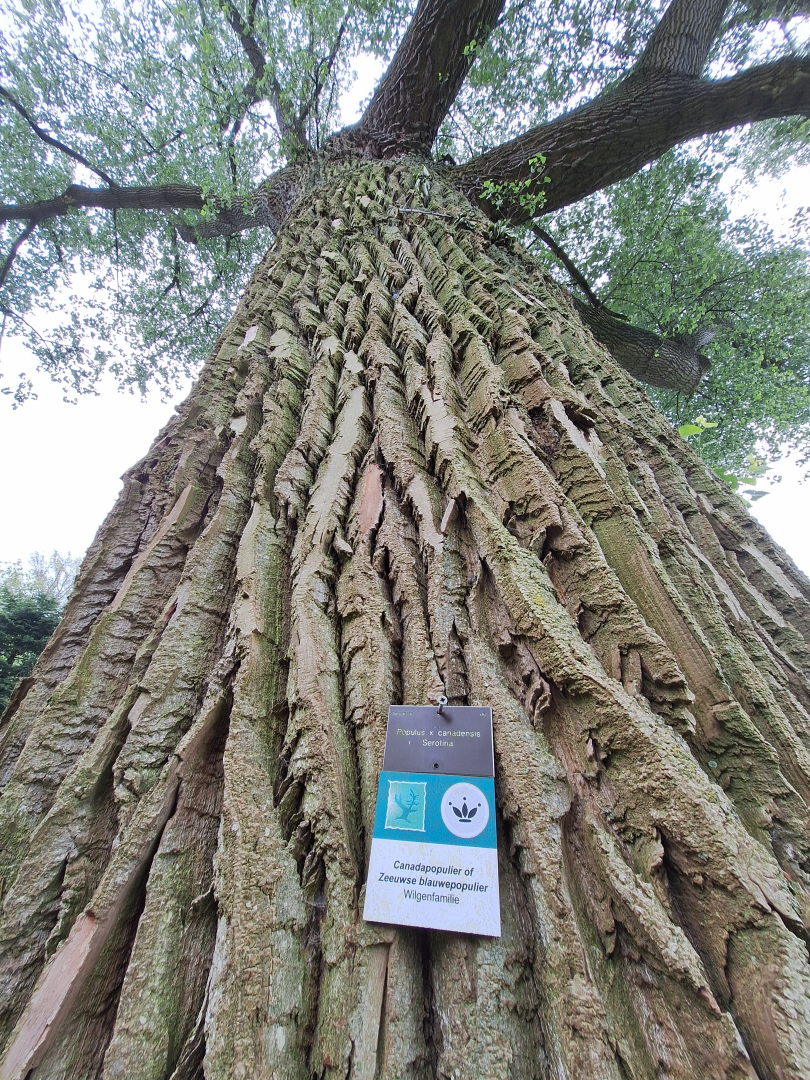
The Canadian poplar. Each branch is large and thick enough to be a tree in its own right.
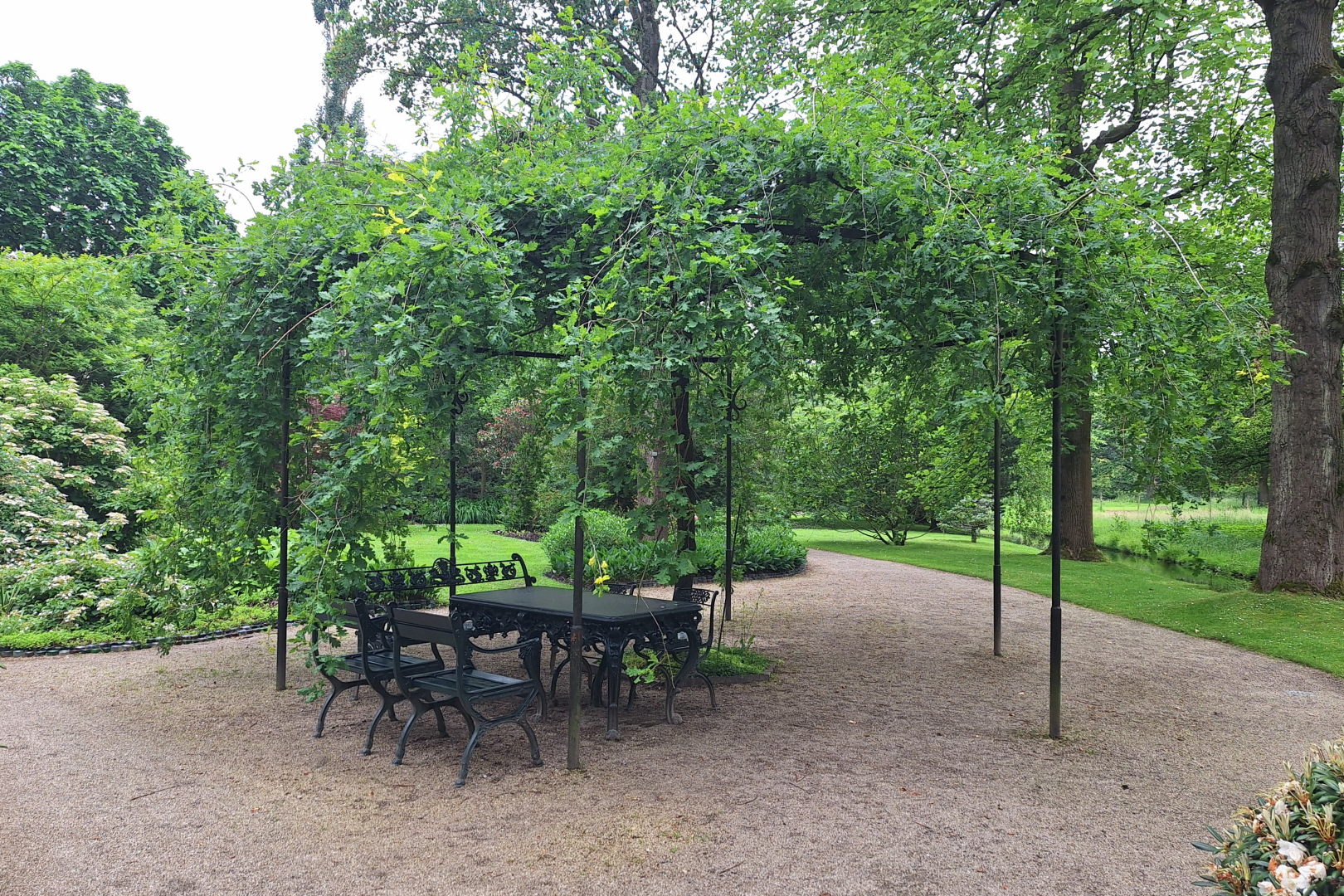
The Oak Bower. I have no doubt that, in better weather, this would be a wonderful spot to eat cucumber sandwiches.
Trompenburg is big, but it's also a lot more open than Kralingen—the amount of Stuff doesn't exactly scale with the area. Even so, if you want to see all of it I'd recommend making a day of it. In the farthest tip of the Excelsior Garden there's a nice restaurant (with fritz-kola) and the gardens and greenhouses are extremely diverse, so if you like gardens you'll definitely fill that time.